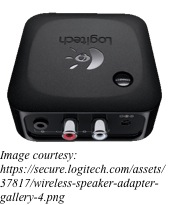It is certainly advantageous to live a wire-free lifestyle—especially with Bluetooth connectivity. However, there is the experience of having to pair earbuds or headphones to consider. Most of the time, the pairing is difficult, takes up considerable time, and is not intuitive. Multi-point Bluetooth helps with these concerns.
Using multi-point Bluetooth, it is possible to connect one pair of earbuds or headphones to multiple devices at once. It may not be necessary to execute the annoying pairing process. Moreover, it allows telephone calls to come through even when the laptop or tablet is playing music through the headphones.
Regular Bluetooth has its deficiencies. The pairing process is troublesome, and switching between audio sources is an incredibly difficult exercise. That is why most users connect their earbuds and headphones to their phones or laptops once and leave them undisturbed. For them, it is more convenient this way than to pair them anew with another device.
Although the Bluetooth Special Interest Group introduced Bluetooth 4.0 with multi-point capability back in 2010, most earbuds and headphones available today lack multi-point capability. But those available with multi-point capability are superb performers.
For instance, a user wearing wireless earbuds is on a video call on a laptop. As the call ends, they decide to go on a jog, taking their phone with them. They start streaming their workout playlist on the phone. With a multi-point capability, they do not need to go through the Bluetooth pairing process, and they can enjoy the music right away through their earbuds.
What happens if a call comes through? Bluetooth multi-point can interrupt an audio streaming process. It can pause the music while the phone switches automatically. Once the call is over or the user chooses to ignore it, the headphones can switch back to the music.
However, it is not possible to play audio from two devices simultaneously when on multi-point Bluetooth. Although multi-point Bluetooth technology sounds fantastic, it is not yet a perfected technique.
When a device is set up with Bluetooth, it actually connects to a piconet or a tiny network. In practice, a piconet is made up of two devices—a single audio source and a pair of headphones.
The headphones in this piconet act as a leader. It dictates how and when the connection operates, and the audio source, whether the phone or the laptop, behaves only as a follower. The follower listens to any command the leader of the headphones sends—like play or pause—and complies with any rules—such as bitrate constraints or audio codecs—that the headphone sets.
With multi-point Bluetooth, a supporting pair of headphones has a piconet that includes a number of extra followers, or audio sources. But different models of headphones, headsets, or earbuds can have different types of multi-point capability. Typically, four types exist—Simple, Advanced, Triple, and Proprietary.
Most consumer headphones support the Simple multi-point capability, allowing connection with two sources. Business headsets support the Advanced multi-point capability. Although able to connect with two sources, any interrupted call is automatically put on hold. Triple connectivity allows connecting with three sources. Apple AirPods and Galaxy Buds of Samsung typically use the Proprietary capability.

